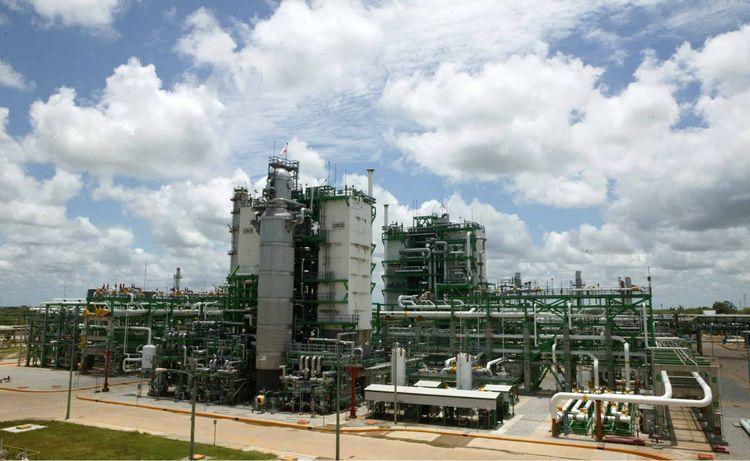Scientists have spoken: limiting global warming could become an unattainable goal. According to the latest report of the Intergovernmental Panel on Climate Change (IPCC), the solution will depend on reducing greenhouse gas (GHG) emissions. Specifically, methane (CH4).
“If we want to stabilize the climate, it will be necessary to reduce greenhouse gas emissions in a substantial, rapid and sustained manner [...] especially methane, could be beneficial both for health and for the climate,” said Panmao Zhai, co-chair of Working Group I of the IPCC.
Methane is a greenhouse gas that is not as abundant as carbon dioxide (CO2), but it is more powerful. It is estimated that its warming potential is so much higher that in 100 years a ton could warm the planet 23 times more than a ton of CO2.
Mexico is one of the few countries with international commitments to reduce methane emissions. Up to 45% by 2025, he signed with the North American Alliance for Climate, Clean Energy and the Environment.
But the scientists spoke again: the problem is that in Mexico there is underreporting, methane emissions in the oil and gas sector double those recorded by the government.
“We noticed that emissions were based on very simple estimates, often using data from other countries. In the official reports, there were very big jumps from one year to the next and the calculation methodology changed,” Daniel Zavala, a scientist at the Environmental Defense Fund (EDF) and coordinator of the study published in the journal ScienceDirect, explained in an interview.
In addition to pollution, gas that could be a valuable domestic resource is being wasted, Zavala added.

Pemex gas processor in Tabasco studied for its methane emissions. Photo: Pemex.
From Veracruz to Campeche
In Mexico, the great escape lies in the southeast. Chiapas, Tabasco, Veracruz and the Campeche coast have high levels of methane pollution that escapes from hydrocarbon facilities. The escape rate in Mexico is 4.7%, much higher than other producing countries.
On average, there are emissions of 1.3 million tons per year, although the measurement recorded by the authorities only reaches 0.6 million, as reported by the study in ScienceDirect.
In addition, before this study, the EDF group of specialists found that oil production and processing facilities on land produce more than 10 times the amount of methane reported in inventories. Conversely, emissions at the coast were 10 times lower.
“When there are measurement problems, it's very difficult to know how to act because you don't have any baseline to know where the problem is and what kind of solutions it needs. Given the lack of information, we decided to carry out these scientific studies where we directly measure methane pollution,” Zavala said.
According to the scientist, it was also detected that emissions occur in three ways: leaks in infrastructure equipment , the incorrect burning of gas and processes in the oil industry that routinely release methane.
This is problematic because methane that is released into the atmosphere earlier is harmful to the environment . It is responsible for 30% of global warming worldwide.
For its part, Petrleos Mexicanos (Pemex) recognizes and lists the need for improvements such as the replacement of wet seals with dry seals in centrifugal compressors for production processes or to reduce leaks.
And although in 2020 the reduction in activities caused the oil industry to decrease methane emissions by 10%, strategies over the last decade demonstrate a constant annual increase.
“It seems that in Mexico there is a framework for action, but the next thing that has to happen is that emissions are reduced and that it does not remain on paper, in treaties and in advertisements,” Zavala added.

Trends in methane emissions from gas and oil in the world based on satellite data. Source: International Energy
Agency (IEA).
Methane as an ally
Last May, the United Nations Environment Program (UNEP) also reported on the need to reduce methane emissions by up to 45% over the next 10 years. Such reductions would help meet the objective of the Paris Agreement to limit global temperature rise to 1.5 degrees Celsius.
“Reducing methane is the most effective way we have to curb climate change over the next 25 years and complements the efforts needed to reduce carbon dioxide. The benefits to society, economies and the environment are numerous and far outweigh the cost,” said Inger Andersen, Executive Director of the United Nations (UN).
Unlike other pollutants, methane is a natural gas considered to be the cleanest fossil fuel. Responsible use would help to meet the needs that exist in various sectors of the country.
“The amount of methane that is emitted in a single onshore gas processor complex would be sufficient to meet 50% of residential gas consumption in Mexico,” said Daniel Zavala.
In addition, if the 1.3 million tons of methane emitted by the oil industry each year were properly captured, Pemex's gas demand would be met between 20% and 30%.
In a country like Mexico where 15% of emissions come from the oil and gas sector, low-cost and readily available mitigation opportunities are available.
But if there are solutions to turn methane into an ally of the economy while advancing efforts to reduce global warming, why are we still betting on fossil fuels?
“Until a few years ago, nobody talked about methane. If we think about global warming, we think about carbon dioxide,” answered the scientist Zavala. “There are a number of technological options to reduce emissions, they are known, you don't have to invent anything. And I think that as long as the Mexican government doesn't make this a reality, it's important that organizations and civil society are an information bridge to land solutions.”



Comentarios (0)